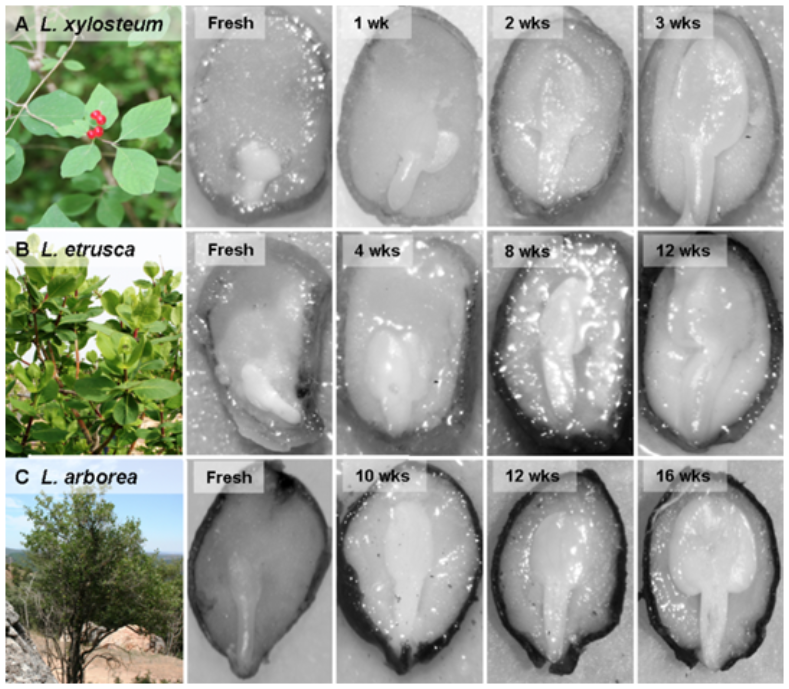Abstract
Environmental requirements for seed germination can operate as an important filter in determining the regeneration niche and ultimately the habitat preference of many plant species. We hypothesize that morphological and morphophysiological seed dormancy may play a major role in habitat selection, because underdeveloped embryos responsible for those dormancy types usually require strict species-specific environmental conditions to grow and to overcome dormancy, imposing marked constraints to recruitment and thus to species distribution. We analyzed the influence of temperature and light on embryo growth and seed germination, as well as germination phenology in three Lonicera (Caprifoliaceae) species. Lonicera xylosteum L. seeds had morphological dormancy. Those of Lonicera etrusca Santi had unusual within-species dormancy variability, with a fraction being able to show both morphological and morphophysiological dormancy. Seeds of Lonicera arborea had deep complex morphophysiological dormancy. The close correspondence between the environmental conditions that each Lonicera species requires to break seed dormancy and their altitudinal range suggests that morphological and morphophysiological dormancies act as important filters in determining the regeneration niches of species, probably because such dormancy mechanisms impose markedly specific environmental requirements during the earlier stages of recruitment.
Keywords: altitudinal gradient, dormancy break, morphological seed dormancy, morphophysiological seed dormancy, regeneration niche, seed-germination phenology.



Leave a Reply